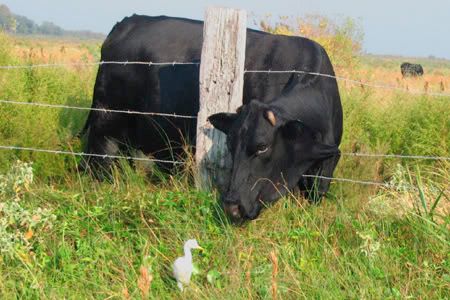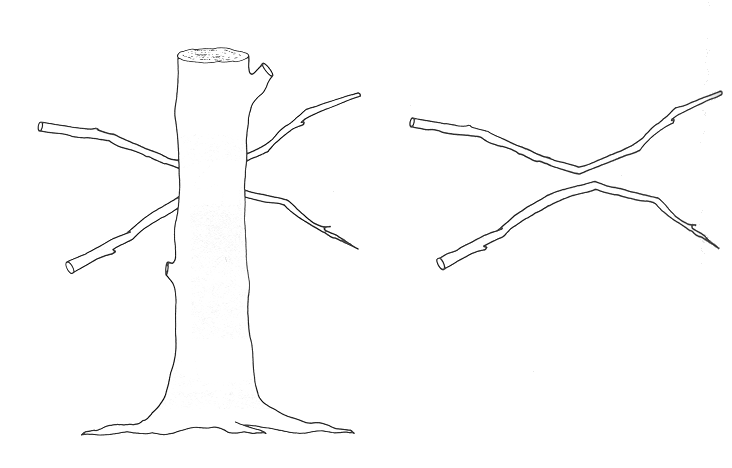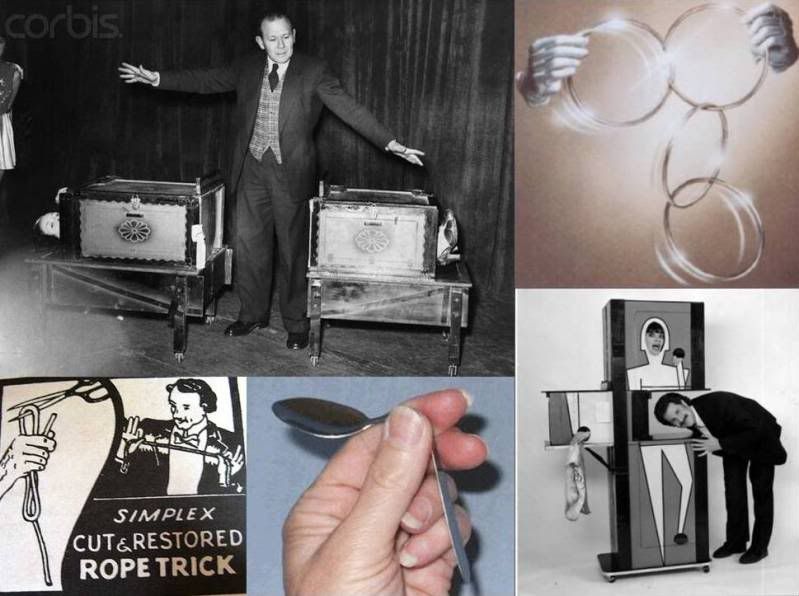
This filling-in process demonstrates some relatively-lawful consistencies that were first observed by psychologists in the Gestalt movement (famous for their mantra that the whole is greater than the sum of its parts). The most notable principle formulated by the Gestaltists, as far as magicians are concerned, is the Gestalt grouping principle of good continuation. The simplest way to explain good continuation is through the following graphic:

Magicians love it when an audience makes assumptions, and automatic, implicit assumptions are the best kind of assumptions for magicians to work with. If an audience does not question their filled-in perceptions, it's quite simple for a magician to operate without their covert manipulations being detected. I would argue that the Gestalt principle of good continuation is the most often exploited perceptual tendency in magic. Take the most well-known of all stage illusions, cutting a woman in half. It would not be an effective illusion if audience's didn't fill in the space between the assistant's head poking out of one end of the box and her feet poking out the other. Often times, magicians will facilitate this filling in process by painting a representation of the assistant's body on the outside of the box. In actuality, the woman's body is much like the sticks pictured above. The illusion works because your filled-in perception of the location of her body does not jive with the actual orientation of her body. This is just one of many instances of good continuation in magic. Here's a collage picturing a number of other well known effects that employ similar principles.

Update (11/01/2010): I recently published a paper on this topic (entitled "The Exploitation of Gestalt Principles by Magicians") at the journal Perception. You can find more info on the paper on my website at http://www.public.asu.edu/~abarnhar/Magic.html#Gestalt







0 comments:
Post a Comment